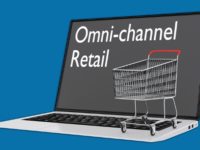COVID-19 has cemented the cruciality of eCommerce for small businesses. But SMEs must now think beyond the pandemic and consider their future reliance on physical versus digital storefronts.
Here’s how you can prepare your small business for a hybrid bricks-and-mortar / eCommerce landscape of the still-unfolding retail future.
Take inventory of strengths and weaknesses
Consider the product or service you offer, and research similar businesses that have seen recent success. If your own business’ data goes back far enough, look at past operational metrics to find what worked before the pandemic, and what worked during. Identify strong points that you can continue to count on, and weak points that need rethinking.
A key part of taking inventory is researching the advantages of eCommerce vs brick-and-mortar selling channels: are physical storefronts worth the rent? Will the face-to-face experience drive more revenue? Is a digital storefront alone enough? For SMEs looking towards a hybrid model, with both in-store and online operations, these prior metrics and wider research will help you understand how best to allocate funds and energy to each channel.
Choose the right online selling platform
No matter your business’s size, strong branding matters. Particularly in a blended retail future, brand strength and consistency online and in person are crucial to building customer loyalty and recognition amid competition.
Try to find an eCommerce platform provider that lets your brand shine. The right online marketplace will allow webpages to be quickly built, seamlessly optimised, easily maintained and updated, and widely customisable to your needs. It also helps when a platform hosts intuitive third-party apps – embedded payment methods, integrated profit calculators, and business metric trackers are a good start – which optimise efficiency and allow you to focus energy on scaling up your business.
Track and monitor business metrics
Assessing your business’ health early and often is a key aspect of optimizing profits and successfully scaling down the line. The right eCommerce platform will provide a comprehensive understanding of operational health, but the importance of business analytics extends beyond the digital realm – metrics surrounding store visits, payment information, customer interaction and more are harder to track for brick-and-mortar retail, but are equally important. Particularly for SMEs with both physical and digital storefronts, comparisons of profit data across varying operations are key to success. The better you can track it, the better you’ll understand it, and the better you can run your business.
Create an online marketing strategy
Different ad outlets drive traffic differently for in-person and eCommerce sales. This may seem obvious in theory but knowing that it’s true won’t help much if you don’t know where to put your marketing dollars. Use customer data to understand how shoppers make their way to your store – word of mouth or online? Tik-tok, Facebook, or Instagram? Developing a marketing strategy that accounts for these unique, multi-platform metrics will allow for greater marketing budget efficiency and increase return on ad spend (ROAS).
Be poised to adapt
While there are ways to prepare for an uncertain future, the future is still just that – uncertain. Trends and tech are changing faster than ever, and the ability to react and adapt can be the difference between surviving or dissolving. Continually monitor trends both internally and in the larger SME, retail, and eCommerce landscapes so you’ll never get caught on the back foot. Despite the uncertainty, the incoming retail world offers greater avenues for business fluidity.
If you’re confident in your brand and product, and keenly understand your business’ health, there’s no reason to shy away from trying new strategies, expanding into either the brick-and-mortar or online sphere – or dare we say, both.











